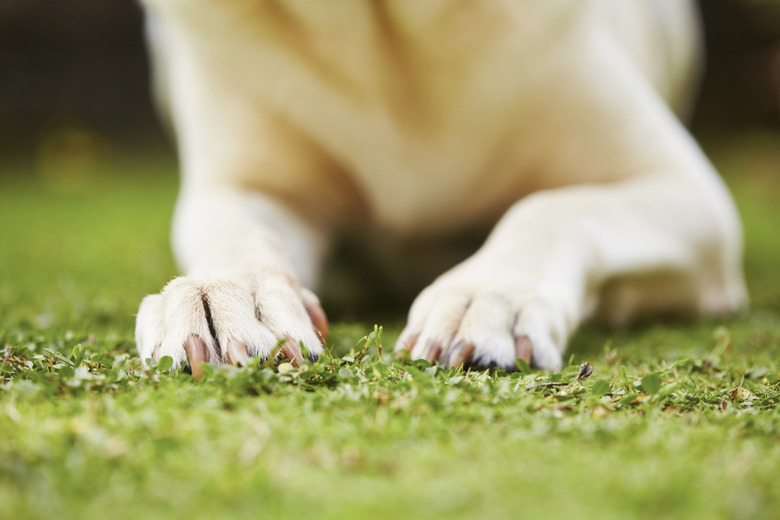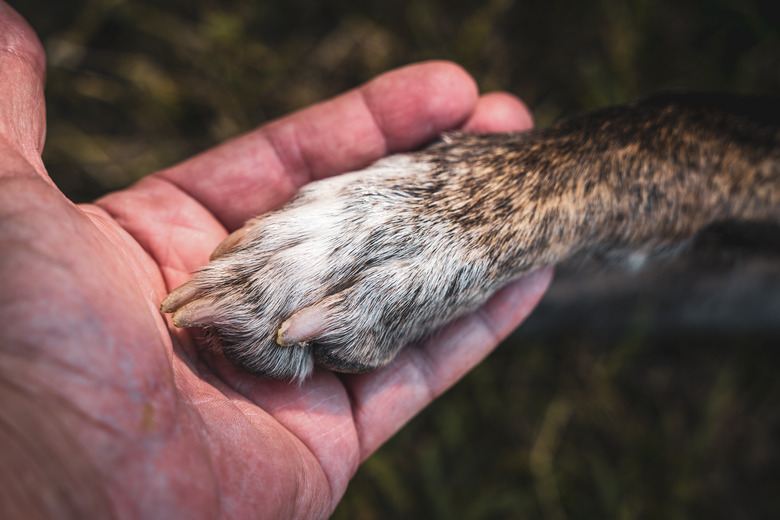Broken Dog Nails: First Aid And Treatment
If your dog breaks or severely injures a toenail, they are in pain. Their nail protects the tissue lying between the nail and toe bone as well as nerves, so a broken or missing nail hurts. While you might treat a mild broken dog nail or dew claw yourself — at least until your get your pet to the veterinarian — a serious nail breakage requires veterinary attention as soon as possible.
What causes broken nails in dogs?
What causes broken nails in dogs?
The most common causes of canine toenail injuries are typically from trauma. While they can occur during exercise outside, such as your dog snagging their foot on a branch, they can just as easily occur indoors. For instance, your dog might catch a nail on carpeting. (Regular nail trims at the groomer help prevent this type of nail injury.)
Dogs who spend most of their life as a couch potato are particularly vulnerable to these injuries because their nails don't wear down as naturally as more active canines' nails. If your dog has torn a nail, they'll likely yelp and limp. You might see blood on the floor, or if they are licking a paw frequently, it's time to investigate.
First aid for a dog's broken nail
First aid for a dog's broken nail
If your dog tears a nail, apply first aid:
- Apply pressure to the nail: Do so for about five to 10 minutes with a clean cloth or gauze square. You can also put some styptic powder on the site.
- Use alternative clotting methods: These include pushing bar soap into the nail or using cornstarch, again applying pressure for five minutes. Use a styptic pencil if you have one in a first-aid kit.
- Remove the damaged part of the injured nail: Only do so if it is a small sliver that's loosely attached that you can easily remove with clippers. Otherwise, allow a veterinarian to remove the damaged nail safely, as this can be painful for your dog.
- Wrap your dog's paw in a cloth: Take them to the veterinarian if the bleeding doesn't stop within five minutes.
Any sign of swelling in the paw indicates infection, and your dog needs veterinary attention. The quick, or nail bed, is attached to the bone, so the prevention or treatment of infection is extremely important.
When veterinary care is needed for a dog's broken toenail
When veterinary care is needed for a dog's broken toenail
When your dog is in pain, it might not be safe for you to treat even a minor toenail injury. Rather than risking a bite because your dog is upset, take your dog to your DVM (veterinarian). Sedation will likely be required so the veterinarian can remove the torn nail and bandage it properly.
A veterinarian might also prescribe antibiotics to treat or forestall infection as well as provide pain medication. Preventing infection is very important to maintain dog wellness. Should an infection reach the bone, your dog's toe could require amputation.
Underlying conditions of broken dog nails
Underlying conditions of broken dog nails
Toenail injuries aren't solely the result of trauma. Sometimes, an underlying condition causes the problem. Suspect a medical problem if your dog is constantly tearing toenails or if their nails break easily. Among the most common medical issues is lupoid onychodystrophy, an immune-related disorder.
Initially, a dog with lupoid onychodystrophy loses a nail or two. But over time, all of the nails fall off. The nails that grow back are usually misshapen or brittle, and they eventually fall off again. The dog experiences pain in their paws. For dogs with onchodystrophy, a veterinarian might prescribe long-term antibiotics along with fatty acid supplements to aid nail growth.
The bottom line
The bottom line
Even though nail breaks are a common injury, broken dog toenails can be more serious than they look because the nail protects nerves and tissue near the bone. If your dog tears a toenail, apply pressure to the split nail with a cloth or use a clotting agent, such as cornstarch, if part of the nail is bleeding. Infections are serious because they can impact the bone in a dog's foot. Only veterinarian staff should remove damaged toenails other than a small sliver of nail that is loosely attached that you can easily remove with clippers.


